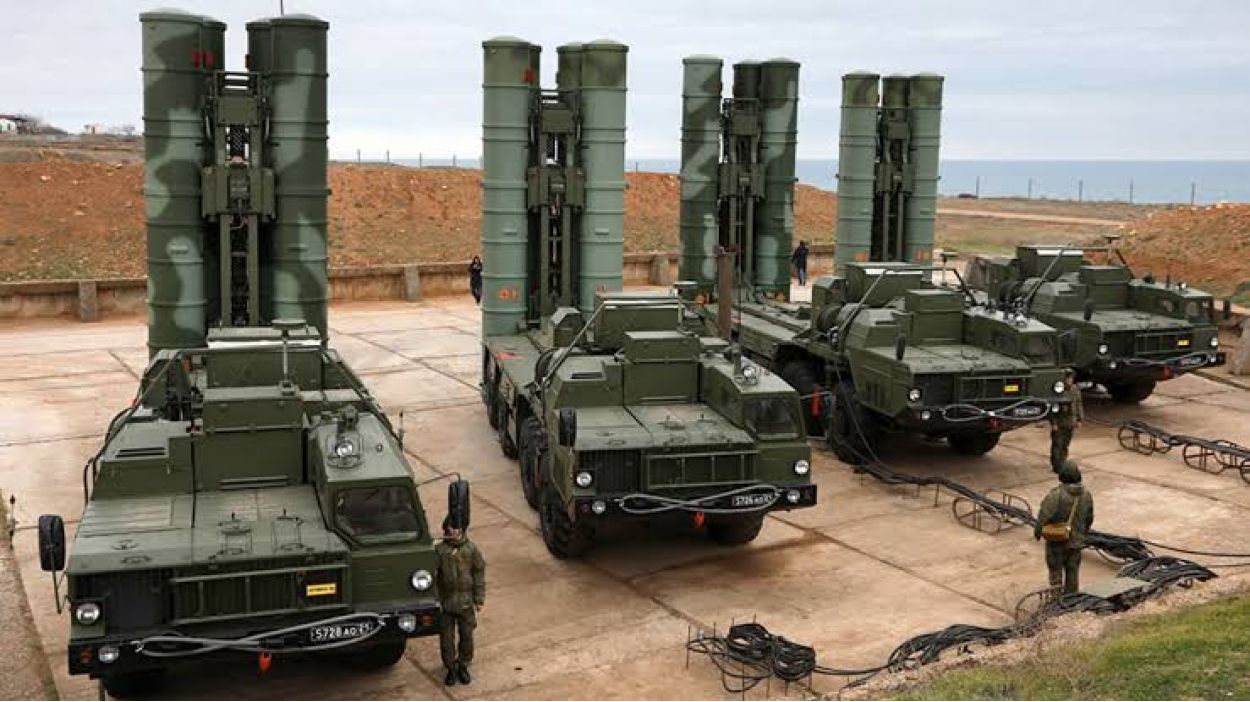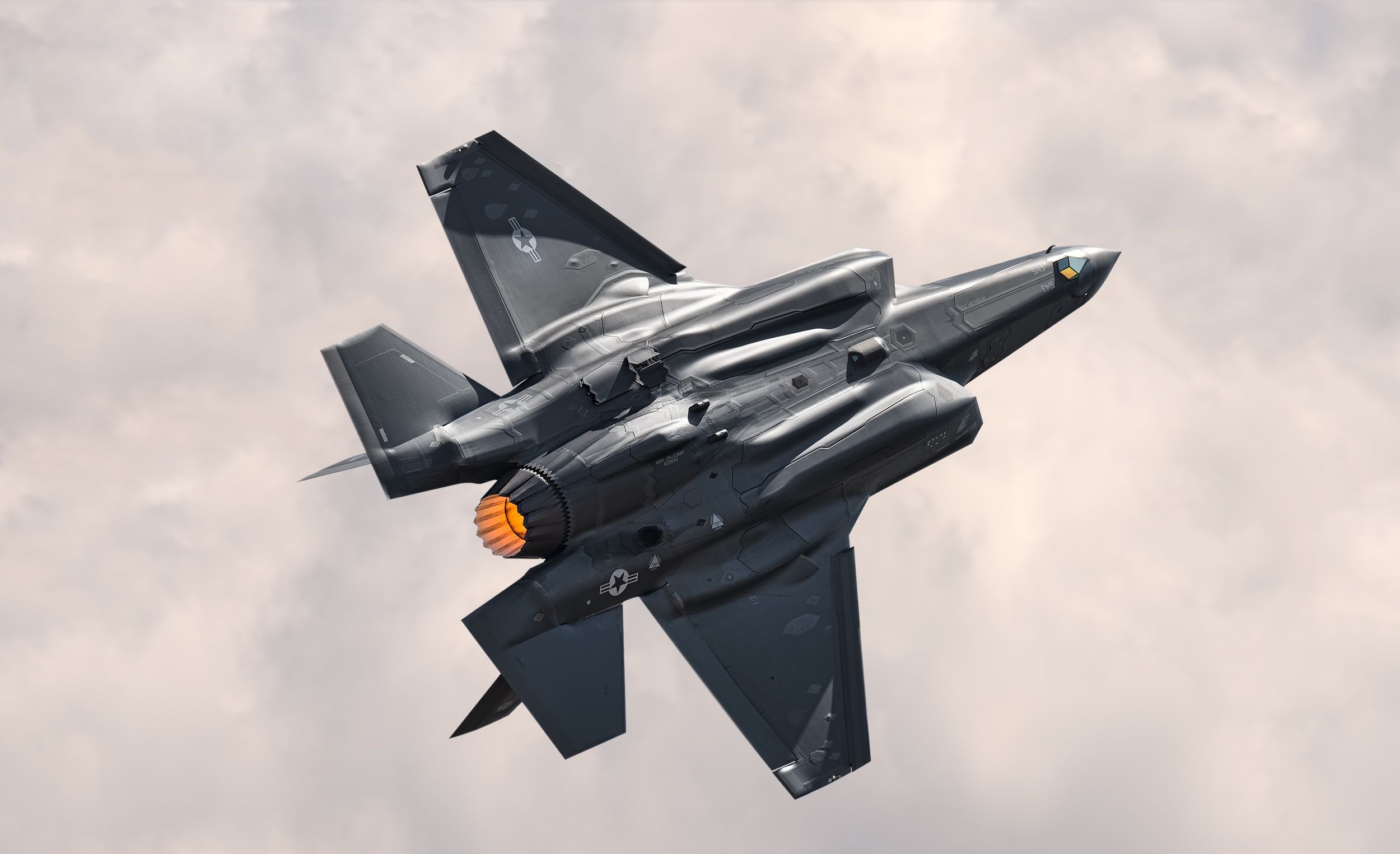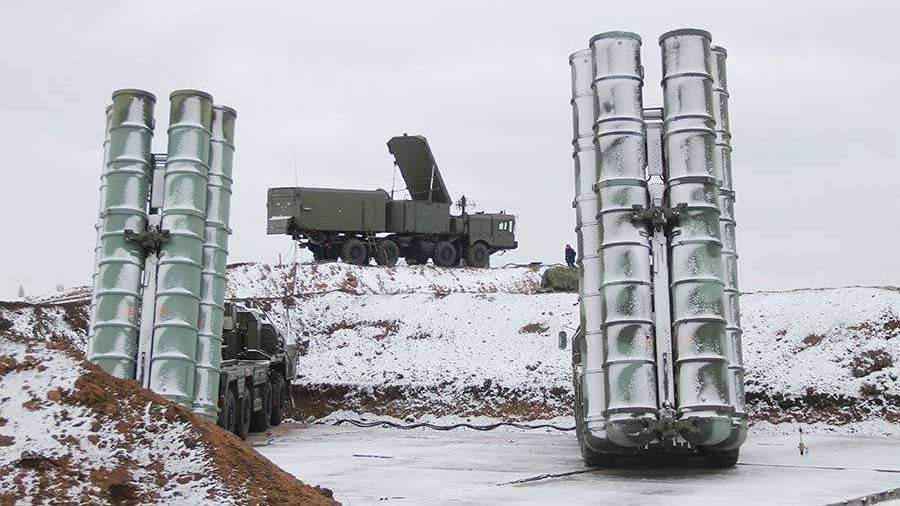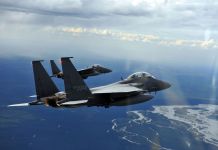A prominent US media outlet admitted Russia’s S-400 air defense system’s formidable capabilities, acknowledging its potential to target stealth fighter jets, including the highly touted F-35 Lightning II Aircraft.
The Russian S-400 stands out as the global pinnacle of air defense systems, boasting unparalleled capabilities. On the other hand, the F-35 is hailed as the most successful fifth-generation stealth aircraft that dominates the global fighter jet market.
The S-400 Triumf, also known as the SA-21 Growler within NATO circles, boasts an impressive array of capabilities, including the ability to deploy various missiles tailored to engage different air threats. With an engagement range spanning nearly 400 kilometers and highly praised counter-stealth capabilities, the Triumf has earned a reputation as a formidable adversary capable of challenging America’s air dominance.
The S-400’s ability to counter any aircraft has been a significant factor in its export success. For instance, India, which signed a contract for five squadrons of S-400 missiles, has placed its trust in this advanced Russian air defense system to counter China’s fifth-generation fighter jet, the J-20.
The Washington Post’s admission, citing military experts, signals a departure from the usual Western skepticism regarding the S-400’s prowess in countering stealth technology.
US Hesitant To Deploy F-35 Near S-400?
While the possibility of confrontation between these two formidable weapons systems may seem remote, the concerns surrounding their coexistence are very real.
The crux of the issue lies in the fear that the S-400 could compromise the sensitive technology and operational capabilities of the F-35. The diplomatic fallout from the acquisition of the S-400 by Turkey, a NATO member, serves as a poignant example of the tensions surrounding the issue.
The dispute between Turkey and the United States over the purchase of the S-400 in 2019 resulted in Ankara’s expulsion from the F-35 program, effectively halting all training and delivery processes related to the fighter jets. This rift underscores the seriousness with which the United States views the potential risks associated with the co-location of the F-35 and the S-400.
Kathryn Wheelbarger, then-US acting assistant secretary of defense, succinctly summarized this concern when she openly acknowledged that the S-400 was specifically designed to target and neutralize aircraft like the F-35.
In her words, it is “inconceivable to imagine Russia not taking advantage of that intelligence collection opportunity.”
This sentiment was also echoed by Gen. Tod Wolters, who led the US European Command, emphasizing the fundamental incompatibility between the F-35 and the S-400.
He highlighted the inability of these systems to communicate with each other and underscored the risks posed by the S-400’s attempts to exploit the F-35’s capabilities. The prospect of sharing critical radar and operational data with Russia is a scenario that the United States and its allies are determined to avoid at all costs.
Despite the low likelihood of confrontation between these two military assets, the mere presence of the S-400 in regions where the F-35 operates poses a complex and multifaceted challenge.

Defense experts suggest that the presence of the S-400 near the F-35 could enhance Russia’s capacity to improve radar detection of American aircraft. Additionally, with increased access to F-35 data, S-400 owners and operators may more effectively identify vulnerabilities in the aircraft.
Hellenic Air Force Colonel and electronics engineer Konstantinos Zikidis told EurAsian Times, “The S-400 utilizes two or three radars, which complement each other. Therefore, even if the main search radar may not be able to obtain a weapons-grade track, it can cue other radars to obtain an accurate track.”
Is The S-400 Truly Capable Of Detecting Stealth Jets?
The roots of the S-400’s technological prowess can be traced back to its predecessor, the S-300 system. While the S-400 shares much of its hardware with the S-300, significant upgrades have been made to the radar systems, software, and missile types. These enhancements provide the S-400 with increased flexibility in target intercepts and extended range capabilities.
At the heart of the S-400’s counter-stealth capabilities is the Nebo-M radar system, which comprises three distinct arrays operating at different frequency bands.
By leveraging low-frequency radar arrays such as the Nebo SVU (VHF-band) and the Protivnik G (L-band), the Nebo-M system can detect the presence of stealth fighters as they approach. While these low-frequency arrays may not provide the image fidelity required for targeting, they play a crucial role in initial detection and tracking.
To complement the capabilities of the low-frequency arrays, the Nebo-M system integrates Russia’s Gamma S1 array operating in the S and X-bands. By networking these arrays, the Nebo-M system offers a comprehensive and layered approach to detecting and tracking stealth aircraft.
It is important to understand the inherent limitations of stealth technology when assessing the effectiveness of the S-400’s counter-stealth capabilities.
While modern stealth fighters are designed to minimize detection against high-frequency radar bands, they are not entirely immune to detection. The size of their radar cross-section (RCS) determines their detectability, with smaller RCS values indicating reduced visibility to radar.

For instance, the F-35 boasts an RCS of approximately 0.0015 square meters, while the F-22’s RCS is even smaller, ranging from 0.0001 to 0.0002 square meters. Despite these advancements in stealth technology, no modern fighter can entirely evade detection against low-frequency radar bands.
A peer-reviewed assessment by Hellenic Air Force Colonel and electronics engineer Konstantinos Zikidis sheds light on the capabilities of the Nebo-M system.
According to Zikidis’ research, the low-frequency arrays employed by the Nebo-M can detect the F-117 Nighthawk at ranges of up to 350 kilometers in optimal conditions and potentially as far as 72 kilometers under heavy jamming.
However, it’s essential to distinguish between detection and targeting. While the S-400’s counter-stealth claims are based on its detection capabilities, successfully targeting a stealth aircraft remains a complex and challenging task.
In practical terms, stealth technology aims to delay detection long enough for the aircraft to either engage the enemy or evade the threat. The effectiveness of stealth depends on various factors, including the distance between the aircraft and the radar array.
S-400 Vs F-35: Who Will Win?
The data provided by Hellenic Air Force Colonel Zikidis depicts the detection range of the S-400 system’s low-frequency radars against the F-117.
Given that the F-117’s radar cross-section is approximately 30 times larger than that of the F-22 and at least double that of the F-35, the detection and targeting range of these advanced fighters will be significantly diminished.
According to past estimates, the S-400 radar systems could spot an F-35 when it approaches within roughly 20 miles. However, the F-35 is armed with air-to-ground missiles capable of reaching targets up to 40-60 miles away.
Launching from a distance well beyond the S-400’s 20-mile detection range, the F-35 missile stands a strong chance of hitting its target without risking the aircraft. Yet the reality is far more complex, especially when considering integrating the S-400 into a broader integrated air defense system (IADS).

Miltos Antoniades, a former Air Force Specialist at the Hellenic Air Force, pointed out that penetrating such sophisticated networks is no easy feat. Antoniades highlighted various scenarios that complicate the task of stealth fighters penetrating integrated air defense networks.
A nap-of-the-earth (a method employed by military aircraft involving flying at extremely low altitudes, aimed at evading enemy detection and attacks within a high-risk setting) approach might evade detection by the S-400 radar but expose the aircraft to other threats, such as point-defense systems like the Tor M1.
Alternatively, flying at medium altitudes might trigger responses from other elements of the air defense network, such as fighter jets in combat air patrol (CAP), forcing stealth aircraft to deviate from their flight path or risk exposure.
Moreover, the presence of airborne radars or ship-borne anti-aircraft systems adds another layer of complexity. The more sophisticated the air defense network, the harder it becomes for stealth fighters to penetrate and engage high-value targets like the S-400.
Even if a stealth fighter manages to approach undetected and launch its weapons, the S-400 crew is likely to detect the launch and take defensive measures.
Among the potential responses are shutting down radars, firing salvos toward the threat, or deploying decoy tactics. The effectiveness of these countermeasures remains to be determined and would only be proven in real-world combat situations.
Similarly, the potency of stealth fighters in penetrating integrated air defense systems and neutralizing high-value targets like the S-400 hinges on continuous evaluation, adaptation of tactics, and the dynamic nature of warfare.
Expert Take On The Issue
Speaking with EurAsian Times, Patricia Marins, a defense analyst closely monitoring Russian defense industries, said, “When comparing the F-35 with Russian air defenses like the S-300 and S-400, the Turks are the only ones who have tested and know the results. According to Turkish reports, the S-400 was able to detect the F-16, F-35, and even the F-22. No one except the Turks can confirm this.”
She further pointed out, “There have also been incidents reported in recent years where the F-35 was unable to detect the S-300.”
Marins highlighted that the crucial factor is not whether the S-300 and S-400 can detect stealth fighters but rather if they can maintain tracking long enough to effectively engage the target.
“In other words, the effectiveness of these systems against the F-35 depends on the circumstances. Another consideration is which version of the F-35 is being discussed as the US continues to enhance the aircraft,” she added.
Stealth fighters like the F-35 possess technology that results in variable Radar Cross Sections (RCS), which impacts their detectability. Moreover, the pilot’s maneuvering capabilities play a significant role in the detection process.
Marins suggested that it was reasonable to assume that the aircraft might be detected before or after the pilot fires HARM or high-speed anti-radiation missiles, with considerations for the range of these missiles, such as the new AGM with a 300km range, enhancing pilot security.
Marins pointed out ongoing observations of anti-air systems from both sides struggling against stealth cruise missiles in Ukraine but cautioned against extrapolating these results to fixed-wing aircraft, emphasizing the distinct nature of these scenarios.
That being said, as the debate rages on, the US media’s acknowledgment of the S-400’s ability to challenge stealth technology adds a new dimension to the ongoing discourse surrounding the balance of power in modern warfare.
- Contact the author at ashishmichel(at)gmail.com
- Follow EurAsian Times on Google News




